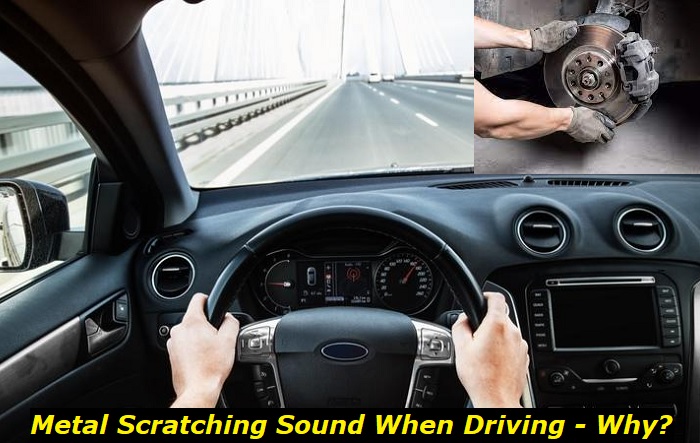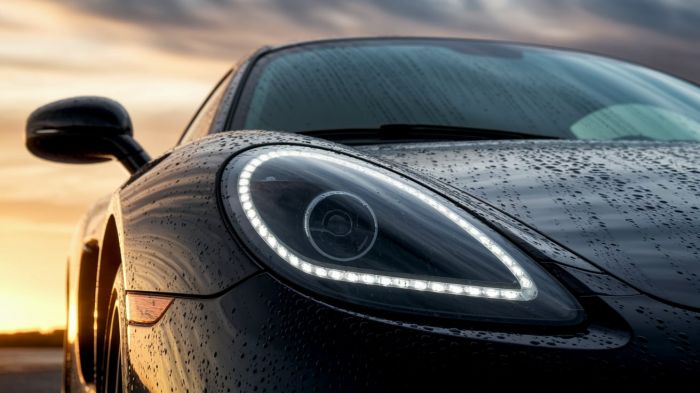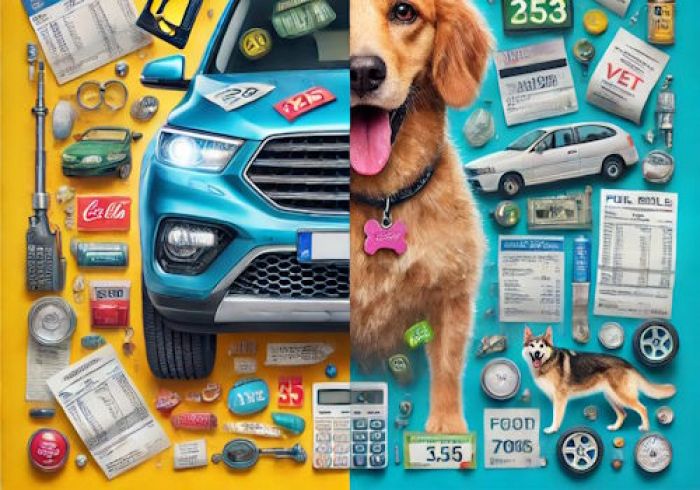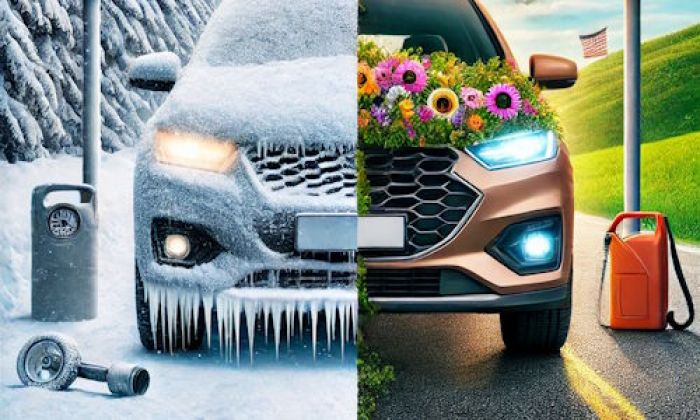Metal scratching sounds are not only annoying but also worrisome. A lot of our readers shared how it leaves them anxious, frustrated, and at times, panicking and fearing they might end up stranded in the middle of the road.
Wheels problems highlights
- Level of importance:medium
- Common reasons:potholes, accidents, lug nut problems
- DIY inspection:possible
- DIY repair:possible
- Average price in shops:$50 - $350
- Average time:0.5 - 3 hours
- If ignored:wobble, wheel falling off, vibration, no drive

Why Does a Vehicle Make Scratching Sound When Driving?
While the metal scratching noise does not always happen when driving, it is possible in the lifetime of your vehicle when not taken for regular maintenance. Here is why it might produce this metal screeching noise.
1) Worn-out brake pads
Brake pads compose of different materials such as rubber, fiber, ceramic, or metal. Nevertheless, these materials wear over time due to continuous friction.
When these pads wear for about 2 mm of thickness, it could get to the point where its metal backing plate could rub or brush against the rotor.
At this point, the metal-to-metal contact creates grinding noise that could get uncomfortable.
If you find these grinding noises beneath and at the wheel's position, check it once. Your brake pads need replacement. Not replacing them is a safety risk because your vehicle may not stop or slow down when needed. It may skid or lose control. You may find yourself at short stops. Also, it could lead to worse damage within your brake system parts, such as warped rotors or damaged calipers.
2) Low-quality brake pads
Low-quality brake pads contain more metal than premium-quality brake pads.
If you've recently replaced your vehicle with cheaper and low-quality brake pads, it tends to chip off easily, produce metal scratching noises, and get in contact with the rotor discs easier.
Also, if these brake pads are not intended for your vehicle, they may not be able to withstand the constant friction and may damage your rotors easily.
For this reason, ensure you are using high-quality brake pads for long-time use and to avoid damage to other parts in contact with them.
3) Loose bearing
Loose wheel bearings can make a huge impact when driving. When your wheel bearings are in this state, they will not provide enough support for the wheels. Your wheel is now rotating freely from its axle, causing them to come in contact with other metal components.
Your rotor can rub against the dust shield. Your brake caliper may brush against other metal parts. In this case, loose bearings lead to metal-on-metal contact, producing a metal scratching grinding noise.
You have to address this quickly, as the constant movement of the wheels could damage other parts of your wheel.
Here are the symptoms you are driving with loose bearings:
- Metal scratching noise
- Uneven wear on tires
- Excessive vibration on your wheels while driving
- Wobbling steering wheels at different speeds
- Felling loose when steering the wheel
4) Bent or twisted brake dust shield
A brake dust shield is especially useful in extending the life of your braking system components, such as brakes, rotors, and calipers. It protects the brakes and wheels from dirt, debris, and water. But as a shield, it takes all the impacts from external objects. The dust shield forms dents and bends over time because of colliding with different objects.
A bent brake splash shield would no longer fit snugly in its place. It may rub against other metal components near the wheel, causing metal scraping noise. Aside from the audible scratching noise, you may experience unusual vibrations while driving. Also, there will be uneven wear on your brake pads and tire. You may also hear it dragging on the ground while driving. When you find any of these signs, check for other symptoms and replace your brake dust shield as soon as possible.
5) Brake blockages
The road has many objects that can get in the way of your braking system while driving. Pebbles, debris, and broken metal parts can get into your brake's backing plate & the rotors. These obstacles can stick to the metal plate and create grinding noise. While rocks are not unusual items to get in your brakes, they can damage your rotors prematurely.
Unfortunately, if the rocks or pebbles did not dislodge on their own, you may have to remove the entire wheel to gain access to it. You would probably locate it inside the dust shield. Simply bend it lightly and wait for the object to fall off.
6) Damaged heat shield
A heat shield protects your exhaust system from excessive heat, moisture, and physical damage. Being exposed to rocks, debris, and the exhaust system itself, it could weaken and get brittle over time. Once it breaks, it could get in contact with other metal parts while driving and produce a metal-on-metal screeching and rattling noise.
This noise becomes more audible during acceleration, adding more stress to your engine. To fix this issue, you need to replace it as soon as possible.
7) Uneven or worn-out rotors
Rotors wear out over time. Due to friction and excessive heat produced, it can result in an uneven or warped rotor. The rotors and brake pads work hand-in-hand. When the surface of the rotors is not even, the brakes could end up shaking and vibrating. This event could also wear out brake pads. And continuous use of it could wear the brake pads, resulting in the back plate touching the rotors. This event produces metal scratching noises when braking.
To fix this, you can either replace or resurface the rotor, depending on the extent of the damage. You can avoid this by bringing it to your trusted service shop for inspection.
8) Low Transmission Fluid Levels
Transmission fluid is essential in keeping your transmission system lubricated. It is also responsible for keeping the system cool and also provides power in its hydraulic system for shifting gears. But when the transmission fluid is low, the moving parts will create metal-on-metal contact and friction and make audible scratching sounds.
Do not ignore the sounds produced by low transmission fluids because they can damage the gear parts and result in gears slipping. Keep your transmission fluid levels within the manufacturer's recommendation to avoid this problem.
9) Loose suspension
Suspension is integral in absorbing shocks, vibrations, impacts, and bumps in the road while driving. It consists of different moving and flexible components that help improve driving. But when its components become loose, it creates metal-on-metal contact, producing a scratching noise. The causes of loose suspension may include one of the following:
- Worn shock absorber
- Worn suspension springs
- Damaged or broken steering linkage
- Misalignment
- Worn or broken bushings
- Damaged ball joints
- Improper tire pressure
- Vehicle weight
To fix this problem, you need to inspect the metal components of your suspension system. Ensure that it is lubricated.
Inspect your steering and suspension bushings. Get your trusted mechanic to check all worn-out components.
Should you Keep Driving when There is a Metal Scratching Sound?
Do not keep driving when you hear a metal-scratching sound while driving. A metal scratching sound is a sign of danger that is soon to come. Be it in your braking system, suspension system, or transmission system, do not sleep on your vehicle producing annoying screeching noises.
Never wait for your vehicle to shake or vibrate because it might lead to an accident. Keep an eye on metal components, especially your brake pads and rotors. It's dangerous to drive with worn-out brake pads or rotors, loose bearings, or loose transmission fluid.
Aside from that, the continuous rubbing of metal parts could damage good metal components. Even little metal parts like bearings or bolts need replacement when corroded or broken.
How to Diagnose a Metal-Scratching Sound While Driving?
If you hear metal grinding, squeaking, or squealing sounds, bring it to your mechanic for troubleshooting and accurate diagnosis.
- First, locate the source of the sound. Doing this will make finding the source of noise easier.
- Next, check your wheels. Your wheels are moving parts prone to metal-to-metal contact.
- Inspect your brakes. There should be no signs of wearing or warping.
- Look at your suspension. There could be loose or worn-out parts in the suspension.
- Check your wheel bearings. This component minimizes friction in your wheels.
- Check for fluid levels in your brakes, suspension, and transmission. Make sure they are properly lubricated.
Final Thoughts
Nobody likes to drive a noisy car. It is uncomfortable, annoying, frustrating, and worrisome to hear it. Driving with it feels like you are on the brink of danger. For this reason, you should not ignore it and find the source of the metal scraping noise.
Addressing it sooner will help you avoid future repairs and help prevent further damage.
To prevent this, get your vehicle inspected regularly. Not only it would save you money, but it would also provide your peace of mind while on the road. Have a safe driving!
About the authors
The CarAraC research team is composed of seasoned auto mechanics and automotive industry professionals, including individuals with advanced degrees and certifications in their field. Our team members boast prestigious credentials, reflecting their extensive knowledge and skills. These qualifications include: IMI: Institute of the Motor Industry, ASE-Certified Master Automobile Technicians; Coventry University, Graduate of MA in Automotive Journalism; Politecnico di Torino, Italy, MS Automotive Engineering; Ss. Cyril and Methodius University in Skopje, Mechanical University in Skopje; TOC Automotive College; DHA Suffa University, Department of Mechanical Engineering






Add comment